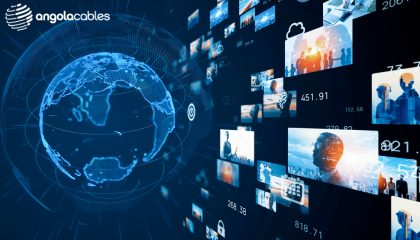Cláudio Florindo, technical director of Angola Cablesa company that works with this technology, says that submarine cables are essential to connect Brazil with the rest of the world at the speed of light, faster, more stable and safer than satellites.
Stay with us and learn more about the considerations that the Angola Cables expert shared with us on the subject!
How are intercontinental submarine cables installed?
The installation of intercontinental submarine cables is quite interesting. Florindo explains that, initially, the survey is carried out, through which the sea floor is scanned. This step is the most important, because through it we will know how and where to install the cable, avoiding dangerous points and ensuring its longevity.
Then, according to the specialist, the installation takes place, made by vessels created especially for the activity.
“In them, there is an instrument, a kind of plow, which makes furrows on the ocean floor, depositing the cable in these ditches created from one coast to the other, depending on the origin and destination of the cable. They leave the continent of origin already buried at about a thousand meters deep, and can reach 8 thousand meters during installation until reaching the destination coast”, explains Florindo.
The director of Angola Cables says that this is an operation that involves the participation of several specialized professionals, such as engineers, IT professionals and professional divers, so that the cable is securely fixed on the sea floor.
This process, due to its complexity, can take up to six months to complete.
The importance of submarine cables for Brazilian telecommunications
As we mentioned, submarine cables are important to connect Brazil to the rest of the world. This technology has proven to be more efficient than satellites, which are subject to failures due to natural weather conditions.
Florindo says that our country also forms a hub that improves Brazilian telecommunications with other parts of the world. In his words
“Today, Brazil is also a strategic point of connection between the Northern Hemisphere and Latin America and an important point of intersection of the continent with Europe and Africa. Through SACS, which makes this connection with Europe, without passing through the United States, overloaded routes that pass through North America are eliminated. As a result, the country ends up becoming an important hub for submarine cables, with two relevant points on a global scale: one in Fortaleza, Ceará (SACS), and another in Praia Grande, São Paulo (MONET)”.
Trends in the use of submarine cables for the coming years
Florindo highlights that the demand for greater capacity in submarine cables has grown significantly in recent years. To give you an idea, between 2016 and 2021 alone, more than 100 new cables were implemented or designed, so the acceleration of the need for greater bandwidth is the main reason for new system designs.
The expert also says that technological developments are being observed to increase performance per fiber pair, increase spectral efficiency, reduce cost per Mb and more efficient operating models
“With optimized fiber optics, these models feature coherent transmission in high modulation order and with amplifiers operating at very high power levels, with a greater proximity to each other, compared to classic designs, currently reaching commercial capacities of 24Tb/s per pair.”, summarizes Florindo.
Did you find it interesting to know more about the importance of submarine cables for Brazilian telecommunications? So, learn more in our article that talks about the changes that submarine cable management has gone through in the last 20 years.

